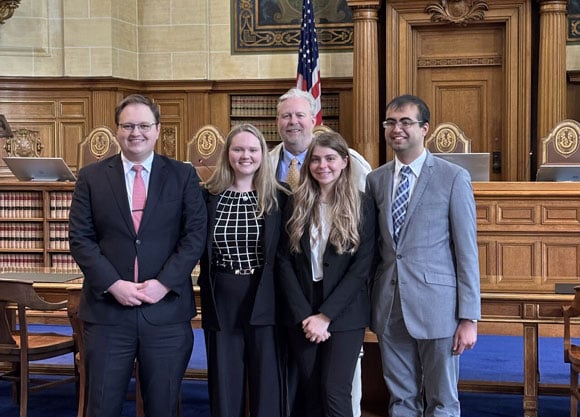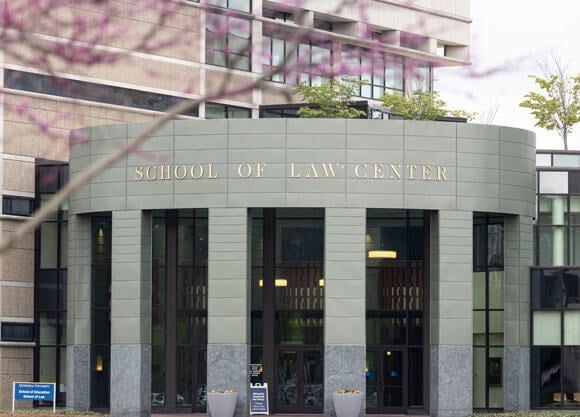Whether you want to play a transformative role in health care reform or become a leader in the management consulting industry, this program will give you a unique perspective on how organizations operate and how they interact with the law. You’ll develop a versatile set of negotiating and analytical skills that will give you a competitive edge as a corporate lawyer, public policymaker or entrepreneur.
Both the School of Law and the School of Business believe in collaborative, hands-on approaches to mastering their respective disciplines. You’ll spend time honing your leadership and critical-thinking skills in group work and mock trials. You’ll also learn to work with real clients and apply your legal and business knowledge in our clinics and externships, where you can get practical experience by representing clients from the local community in disputes with the IRS and providing other services. You also can gain a global perspective through the School of Business‘ experiential learning trips to Asia, Europe and South America.
Beginning on your first day, you’ll receive as much support as you need, through services such as our Day One mentoring program, which pairs you with a faculty mentor as well as a second- or third-year law student for guidance. The vast alumni networks of both schools will be valuable assets during your search for externships and jobs. Our alumni are working at a variety of prominent firms including Goldman Sachs, JPMorgan Chase, Morgan Stanley and GE, and are active in Quinnipiac’s various career fairs and recruiting events.
A total of 45 credits are normally required for the MBA, and 86 are normally required for the JD. However, the dual-degree program requires only 33 business credits and 77 law credits, a savings of 21 credits. A student in the dual-degree program may not obtain either degree until the requirements for both have been met.
Each school will assist in adapting the program to the needs and interests of the enrolled student by approving schedules and joint credits for courses. Students may attend either full-time or part-time.






















